2019
Entity:City
Neo-analog products for urban space
Supervision
Prof. Dr. Claudia Müller-Birn, Freie Universität Berlin
Prof. Carola Zwick, Kunsthochschule Berlin-Weißensee
Prof. Thomas Ness, Kunsthochschule Berlin-Weißensee
Judith Glaser, Kunsthochschule Berlin-Weißensee
People have been living in cities for more than 8000 years. During these millennia, cities have grown to become probably, the most complex thing man has designed. The UN predicts that by the year 2050, up to 68% of the world’s population will live in urban areas.
Cities are superorganisms that embody life collectively. Their structures and processes are versatile and interwoven at different levels. Yet, how most of our present-day needs are served resembles a system of infinite throughput without recycling or feeding loops to where resources initially came from.
Increasing digitization is also affecting cities. In HCI research, intelligent, sustainable and interlinked urban environments are now under investigation. At the heart of a so-called Smart City are networks of mobile devices, sensors, actuators and intelligent algorithms that collect and analyze urban data in real-time. However, purely technologically focused approaches usually fail because the city’s and its inhabitants‘ specific needs are neglected.
As cities should not only be seen as physical spaces or geographical containers for social and technical phenomena, designing for a Smart City is more than implementing urban computing technologies and developing more sophisticated data analysis. Cities function as finely tuned psycho-geographic units influencing residents‘ perceptions, psychological experience and behavior. Urban Informatics, therefore, focuses on technology’s social and human impact.
We want to foster the new culture of the neo-analogue by developing strategies for a Smart City which involve meaningful intersections between people, places, stories, purposes and technologies. These meaningful intersections can only be achieved if the city of Berlin’s identity is considered.
The project “Entity:City” intends to reveal, explore, and design these intersections. Focusing on Richard Roger’s ideal of a city as “the cradle of civilization, the engine of culture, and the inspiration for community and citizenship,” new interfaces are created that take the identity of a city into account, i.e., how inhabitants and visitors experience the city.
In interdisciplinary teams of students of the Freie Universität Berlin and the Kunsthochschule Berlin-Weißensee, concepts at the border between the digital and the physical are developed. By enriching objects with digital content, neo-analog products have been created that explore new forms of interaction between humans, material and code.
Designfair
On February 12, 2020, the Design Fair of the final projects of the semester project Entity:City took place in collaboration with CityLAB Berlin.
During the winter semester 2019/20, students of product design at the Weißensee Academy of Art Berlin and computer science at Freie Universität Berlin worked in interdisciplinary teams to explore current challenges of Berlin’s urban space and its inhabitants and to develop and test neo-analog artifacts. Starting from data that the actors and systems in Berlin generate and leave behind, these are fed back into physical space, resulting in new forms of participation and interaction.
The exhibition was on view at CityLAB Berlin until February 16, 2020. ↗︎
Aktiv Labor



Katharina Bellinger, Design
Jacob Sasse, Design
Mattis Obermann, Design
Tim Feige, Computer Science
Marisa Nest, Computer Science
Teaching methods for road safety are outdated: the traffic landscape is constantly evolving, and there is no standardised and updated syllabus for teaching kids about safety. If there is any teaching material available, it is usually uninspired. Despite recent research showing that children often learn better through play, and holistic approaches that engage their senses, kids are still expected to memorise rules from photocopied worksheets. In an age of smart technologies, we can do better than this. Children growing up now deserve an interactive traffic education that equips them for the smart city of tomorrow.
Aktiv Labor combines modern technologies with familiar gestures, creating an interactive toolkit for schoolchildren to learn about traffic safety. It aims to improve the learning experience for primary school children through neo-analog tools, equipping them at a key age when their sensory perceptions are improving and they are gaining increasing independence. Aktiv Labor’s three independent neo-analog tools can be used to teach various skills, and can be adapted to the needs of different age groups.
Firefly



Nils Juenke, Design
Johannes Müller, Design
Lorenz Ohly, Computer Science
Fabian Rüb, Computer Science
Ludwig Trinkwalder, Computer Science
Berlin. Over the course of more than 100 years one of the oldest subway systems in the world has grown organically with its surroundings. As passenger numbers exploded in recent years, older trains had to be brought back into service to cope with the growing demand. Improvements to the U-Bahn are introduced gradually – the idea that Berlin transport authority BVG would introduce a whole new fleet at once is unrealistic. Any solution must be cost-effective and build on existing infrastructure. Nevertheless, the current situation is causing unnecessary friction. Project Firefly has determined the key ‘pain points’ that really grate on passengers – friction builds station by station, resulting in delayed trains and passenger stress. We propose a way to reduce this friction and avoid its knock-on effects, by simply distributing data and passengers more evenly.
Firefly is a lighting solution that provides passenger information in an immediate way, appealing to human instincts. Making use of data input from previous stations, the firefly modules first light up to indicate exactly where the train will stop, notifying passengers ahead of time whether or not they are standing in range. Once they are on board, the remaining capacity of personal space inside the train carriage is measured and then communicated to passengers in the oncoming station, motivating them to seek out less crowded areas. This visual communication of the data encourages passengers to disperse more evenly across the train and platforms, which should positively impact customer experience and prevent delays. The modules fit onto the existing track infrastructure, functioning as an easy add-on element to any station. Firefly’s installation could serve as a beta-testing phase to test this hypothesis and gather valuable data for future use cases, in order to assess the value this simple data-driven design solution could contribute, to both passengers and BVG.
Kieztalk
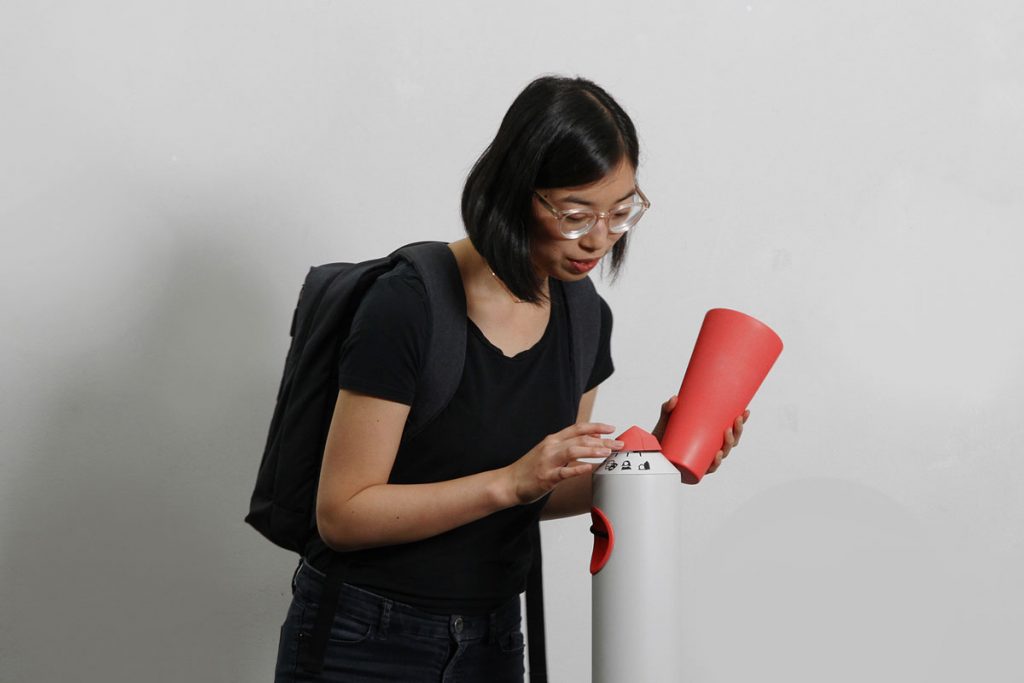
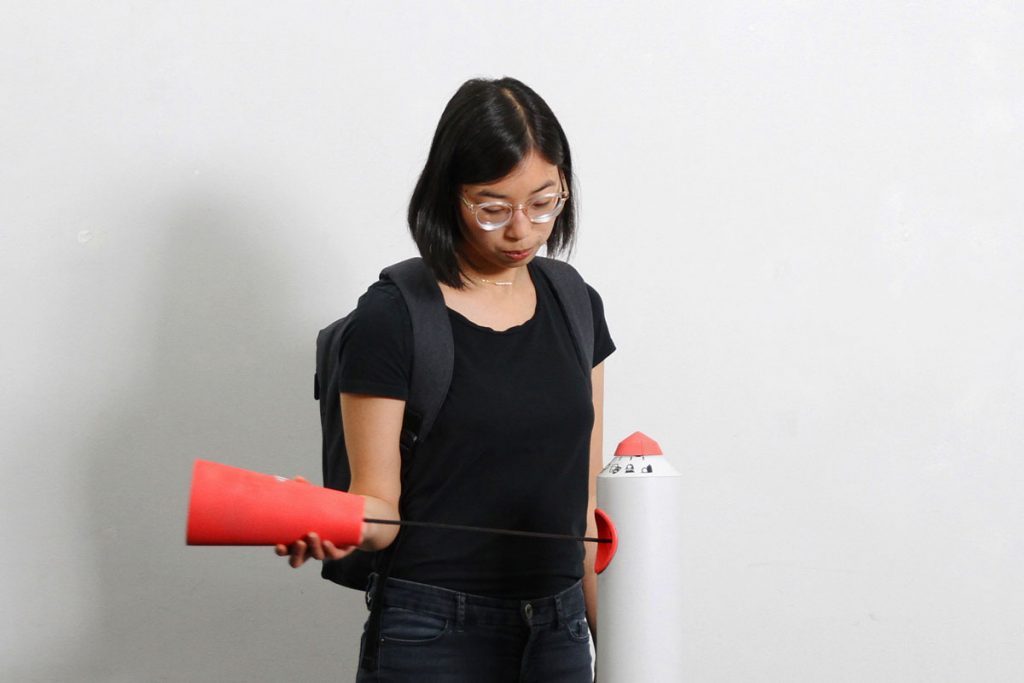

Antonia Nandori, Design
Cindy Peng, Design
Tanita Daniel, Computer Science
Felix Doege, Computer Science
Michael Pluhatsch, Computer Science
Locals become locals – How can a place tell its own story? You move to a new area and want to find out what’s going on. You might have lived here for a while but still don’t know much about the history and culture of your local area. Many others stay living in one place for a long time, and have accumulated a lot of stories to share and tell. KiezTalk provides a way to redistribute this local knowledge, sharing random snippets that depict the profile of a local area. Stories are told by residents, for residents, helping locals become true locals.
The Kieztalk apparatus encourages a spontaneous interaction. This initiative complements the offering of local museums, providing a means to record local history, on a word-of-mouth basis. The neoanalog Kieztalk device combines high-tech with classic analog gestures – reminiscent of a paper cup and string telephone, the truncated cone serves as both the speaker and microphone. Locals stumble upon the device, mounted in a bustling street location. As users hold the cone to their ear, they hear audio recorded by other locals. Turn the cone around and they can share their own story. Users are free to record whatever content they like: ‘Speech-to-text’ software allows the audio to be automatically filtered according to key words. The Kieztalker is designed to be super-local, so users record stories about anything within sight. The device looks neutral, so Kieztalk easily blends into any local area: however, the stories contained within are what make it individual. Instead of ‘broadcasting’ the information, the Kieztalker ‘narrow-casts’: the stories recorded on the Kieztalker can only be heard by one person at a time, and the shuffle mode means the content is rarely repeated in the same order. This way this valuable ‘insider info’ remains somewhat exclusive, only available to individuals who happen to be nearby.
Kieztalk aims to strengthen the sense of community and represent the true diversity of life in urban areas. Stories collected over time can be archived in local museums, preserving the recent history of a place. It’s people who make the city what it is, so it’s only right that the story of a place is told by those who know it best.
Look Left
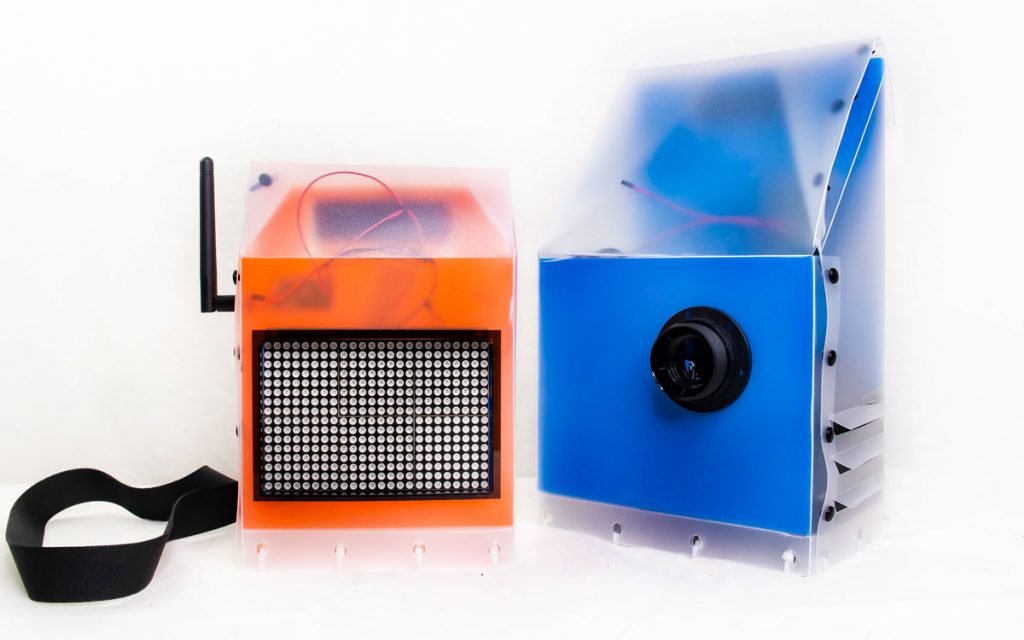
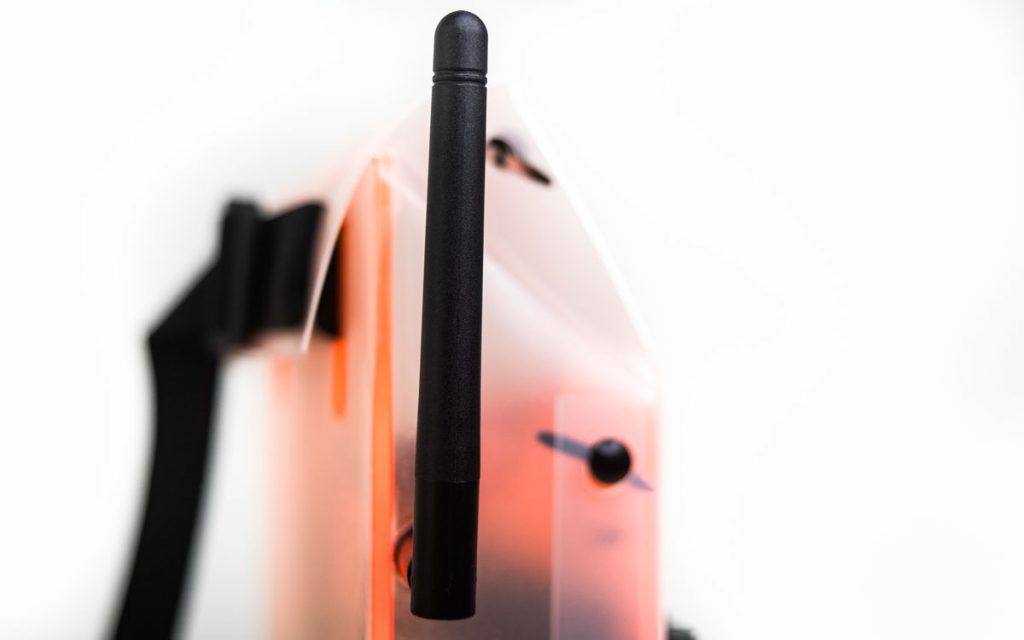
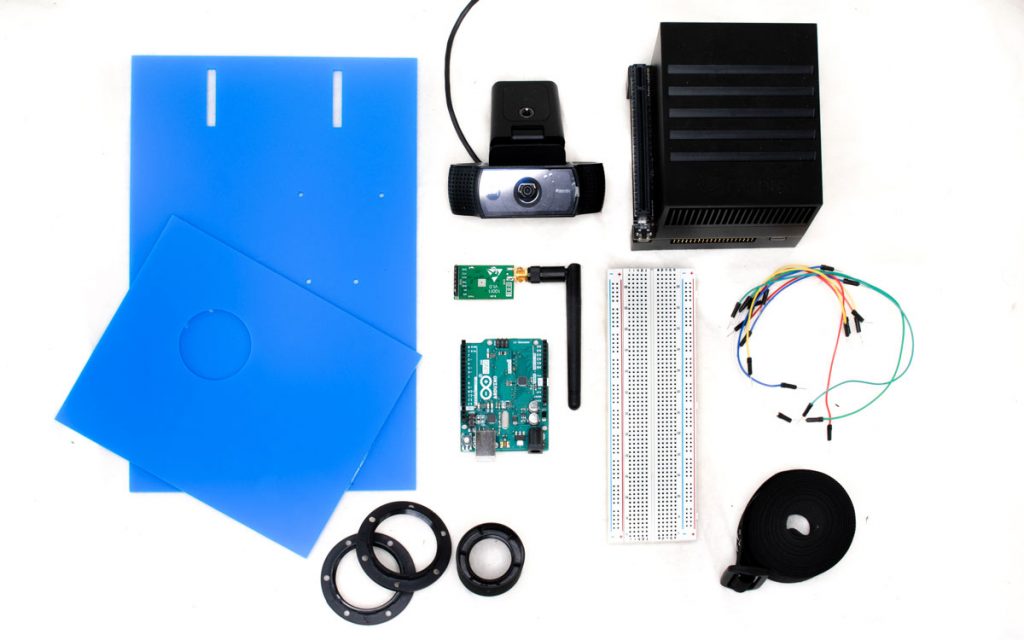
Minseong Kim, Design
Carolina Sprick, Design
Yichao Wang, Design
Bastian Breibert, Computer Science
Ralitsa Dineva, Computer Science
Janis Hahn, Computer Science
A smart traffic safety concept for the next generation of urban pedestrians – Pedestrians are typically the most vulnerable party in traffic accidents, with the highest counts of injury and fatality. Especially if one isn’t familiar with the urban environment, passers-by are more likely to fall victim to the disparity between them feeling safe while carelessly crossing smaller streets and the likelihood of being hit by an approaching vehicle. Local inhabitants on the other hand are mostly aware which streets to cross carefully.
LOOK LEFT converts this local knowledge into a valuable solution that educates the next generation of smart city inhabitants and prevents accidents. Teenagers take part in a project week, where they learn to build smart devices to help improve local traffic safety. These young adults are to become the new safety ambassadors for their neighborhood – urging their community to “look left,” while the devices they built capture and share valuable data. Over 5 days, the young city-dwellers get to grips with traffic dangers in their neighbourhood. The project group gets a DIY electronics kit, with which they build and program a modified traffic cam based on the OpenDataCam Project by Moovel Lab and a warning device that has an LED panel and an Arduino at its core. These are then installed in local streets to monitor these issues and warn fellow pedestrians. The workshop group takes responsibility for monitoring and uninstalling the devices, which are designed for disassembly, so they get sent back for re-use. Any issues with the project can be highlighted on the LOOK LEFT website, and this feedback helps to improve future iterations.
LOOK LEFT should not only make the streets of Berlin a little safer, but it’s DIY format also offers the next generation of smart city inhabitants an opportunity to learn how to code and build their own smart technologies, how to engage with their environment, take responsibility for it, and consider how to shape its future design.
Vota
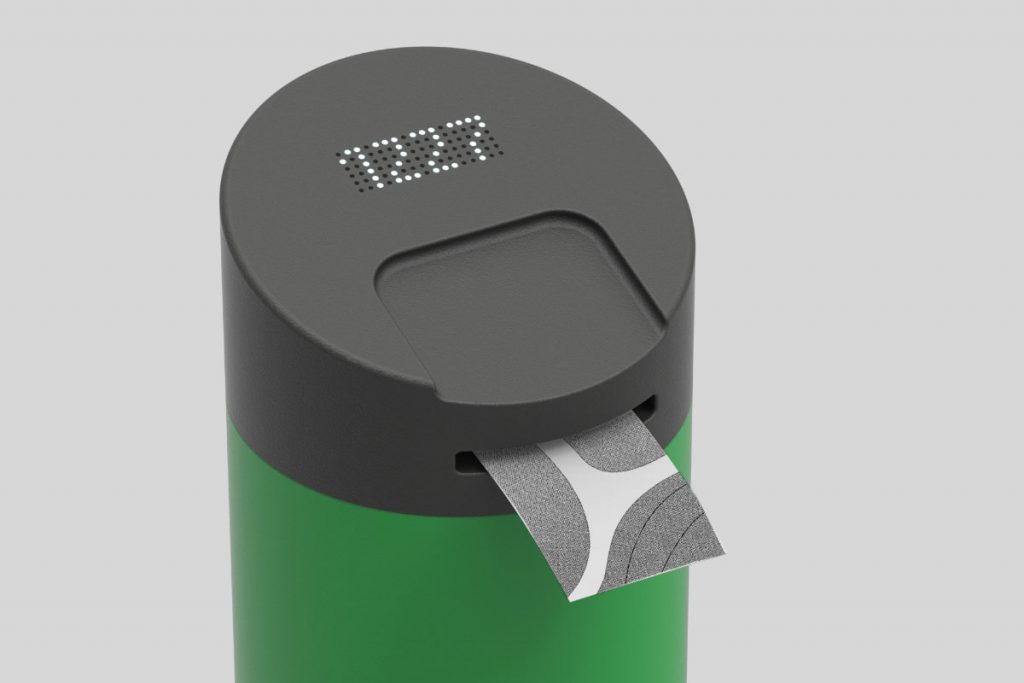

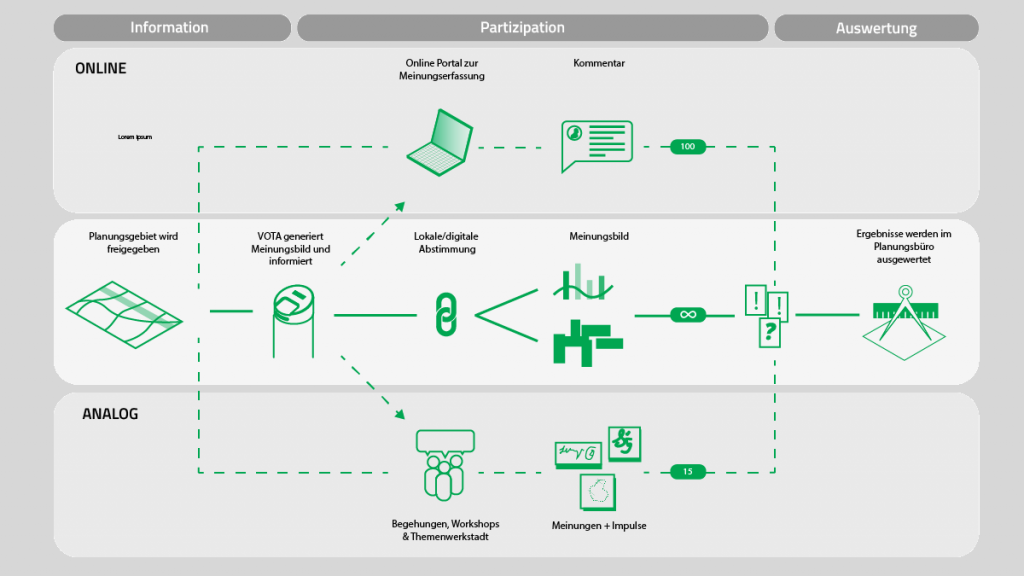
Robin Hoske, Design
Leon Laskowski, Design
Una Preuß, Design
Büsra Aybükehan Altun, Computer Science
Léon Dirmeier, Computer Science
Participation machine for town planning – On the walk to work, you find new construction works have sprung up overnight, causing an annoying diversion. Things like this can make you feel like the city is not your own. However, from 2020 onwards, it will become law for town planning procedures to involve residents.
Some residents are already involved in the consultation process, but typically an imbalance emerges when recruiting. Various groups are often underrepresented: women, the very young and very old, people with less formal education, and first or second generation immigrants. Some of the reasons for this are language barriers, doubts about their own competence and lack of time to participate. Online surveys, while more inclusive in theory, are manually evaluated, therefore the number of participants is limited to avoid high processing costs. This results in consequential errors, and ultimately means that the wishes of many local residents are not taken into consideration when undertaking new public construction projects.
VOTA combines analog and digital elements to simplify the process of data collection and make participation in planning processes more attractive and enjoyable. A large-format poster attracts the attention of regular passers-by, encouraging you to notice a site up for development. A smart column sends a signal to your smartphone to load a simple, image-based survey interface. The survey is quick to complete, and automatically evaluates your response. It also shows current results and asks you for participation in further planning stages. Stickers are then dispensed from the column to visualize your preferences, and you can stick these onto the poster to express your opinion in a creative way – the resulting collage thereby invites more passers-by to take part.